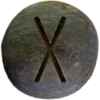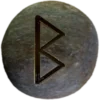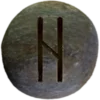Last Updated on April 7, 2025
Table of Contents


The Autumn Sacrifice
The Haustblót (pronounced howst-bloht) marks the start of winter in Norse tradition. The word combines haust (“autumn”) and blót (“sacrifice” or “ritual offering”). It honors gods and spirits before the long cold season. People observe it in late September or early October.
Haustblót is more than a sacrifice. It is a feast, a gathering, and a plea for survival. People give thanks for the harvest and ask for safety through the dark months. Families and farmers make offerings to gods, spirits, or landvættir (land spirits, pronounced land-vett-ir). These beings guard the land and influence fortune.
Offerings include food, drink, or animal sacrifice. These gifts restore balance and show respect. Without them, people believe misfortune or famine may follow.
This tradition ties deeply to the cycle of nature. Autumn ends the time of growth and begins a season of rest. The tone is solemn but hopeful. Sacrifices serve as gifts to the unseen world. In some regions, Haustblót blends with local customs, but practices vary. Some people honor Freyr, a god of harvest and peace. Others call on Odin for wisdom or Thor for protection.
Regional Names and Spellings
The word Haustblót comes from Old Norse. In modern Icelandic, the spelling remains the same, but some texts use the spelling Hǫstblót (same pronunciation).
Alternate spellings include:
- Hostblót – simplified form
- Haustbloet – Latinized variation
- Høstblót – Danish/Norwegian variant (ø sounds like “ur” in fur)
All versions refer to the same rite. Each reflects the cultural spread of Norse tradition.
References in the Sagas
Haustblót appears in early texts. In Hákonar saga góða (The Saga of Hákon the Good), the king avoids the rite. The people demand he join, fearing the gods’ anger if he refuses. This scene shows Haustblót’s power. Even a king cannot ignore it. The blót holds a strong place in both belief and law.
In Landnámabók (Book of Settlements), settlers in Iceland perform blóts for local spirits, seeking blessings and protection through the winter.
These stories confirm Haustblót’s sacred place. It binds people to the land and to each other. ![]()
Meaning and Practice Today
Today, some still observe Haustblót. People use it to connect with seasonal change and old traditions. The forms differ, but the heart of the rite remains.
Modern rites avoid animal sacrifice. Mead, bread, or symbolic offerings take its place. Some people gather in nature; others hold ceremonies at home. Haustblót responds with gratitude, memory, and resolve. It reminds people to face darkness with community and reverence.
The rite offers a time to reflect, prepare, and give thanks. It blends nature’s rhythm with human emotion. Haustblót continues to inspire through its quiet strength.
Runes Associated with Haustblót
Two Elder Futhark runes often linked to this rite are Gebō and Eihwaz. ![]()
Gebō (ᚷ) means “gift.” Say it like YEH-bo. This rune shows the balance of giving and receiving. During Haustblót, people offer food and drink. In return, they seek blessings. Gebō reminds us that all gifts bind the giver and the receiver.
Eihwaz (ᛇ) means “yew.” Pronounce it EH-wahz. The yew tree symbolizes death and rebirth. As leaves fall in autumn, Eihwaz reflects this seasonal shift. It shows the link between life and the ancestors.
Both runes point to change. Gebō calls for action through giving. Eihwaz asks for reflection and inner strength. Haustblót uses these symbols to prepare for winter. The rites keep the old ways alive and the bonds strong. Each sign carries a deep, lasting message.
Its Importance to Asatru
Haustblót marks the end of the harvest for Asatruar. People give thanks to the gods, especially Freyr and Thor, for food and protection. They share meals and drink in honor of the landvættir (LAND-vye-tir), or land spirits. Community ties grow stronger during this time. Offerings often include grain, mead, and meat. These rituals connect people to nature and the divine.
It also prepares the folk for winter. It teaches respect for life’s cycles. The feast reminds everyone of self-reliance, gratitude, and ancestors. The word “blót” (BLOHT) means “sacrifice” or “blessing.” The word “Haust” (HOWST) means “autumn.” Asatruar traditions keep ancient Norse values alive. Haustblót brings these values into the present by honoring the gods through simple, powerful acts.


